Doug Aitken judges Wallpaper* Design Awards 2022
American artist and Wallpaper* Design Awards 2022 judge Doug Aitken discusses art that fuses humanity to nature, and how architecture and design ‘should be about the entire narrative, rather than the endpoint’
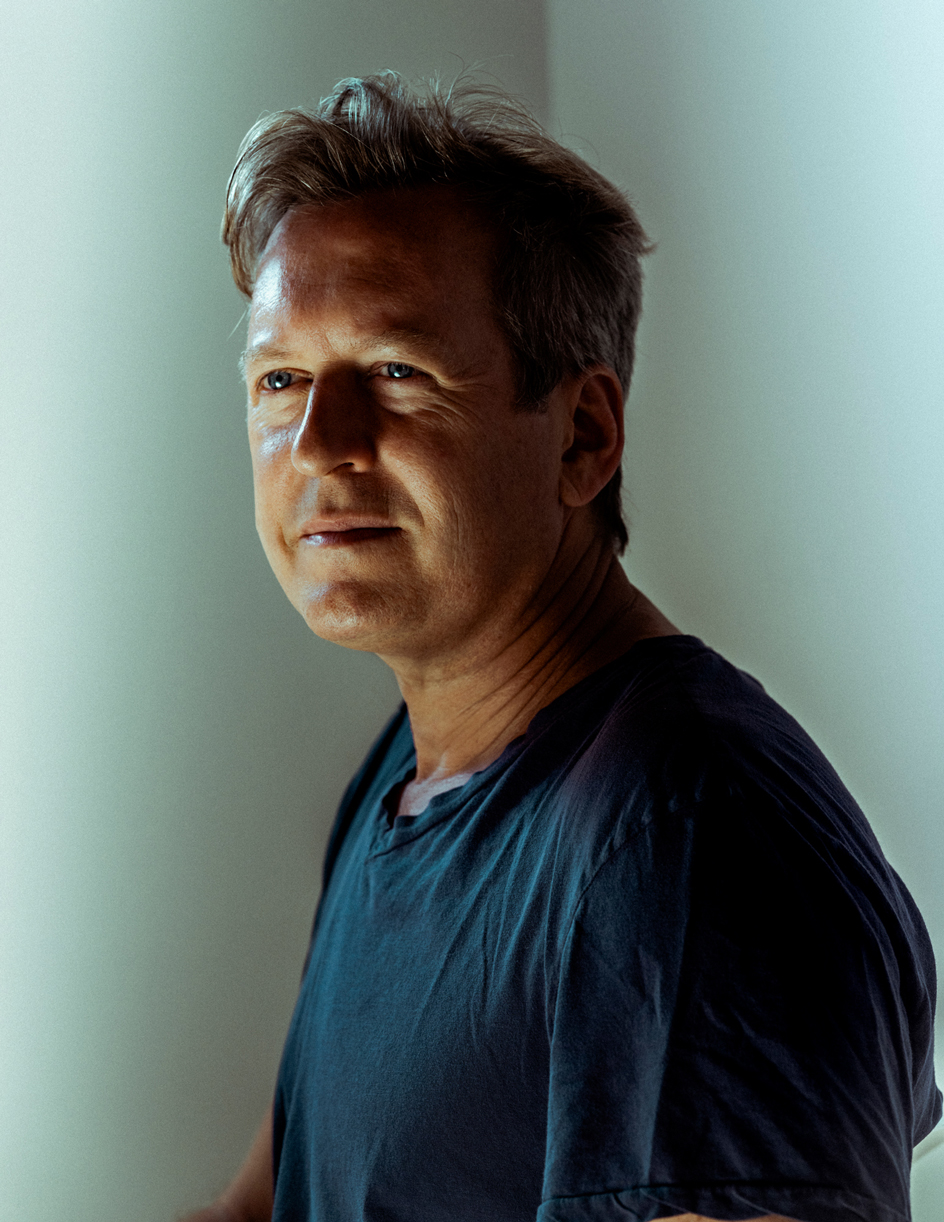
Doug Aitken has long been interested in the tension between man-made and natural environments. More than a decade before the climate emergency and Covid pandemic compelled a collective re-evaluation of our relationship with the planet, the multidisciplinary artist presented Migration (Empire), 2008, a 24-minute video work that saw indigenous animals temporarily introduced to architecturally generic American motels: a pair of white peacocks perched on twin beds, a deer peering into a minifridge, a bison fiddling with a duvet cover. Surreal, intriguing and oddly endearing, these scenes found added resonance when the work was recently included in ‘Lands End’, a group show addressing climate change, organised by San Francisco’s For-Site Foundation.
The venue, called Cliff House, is a seaside building just north of Ocean Beach whose glory days are long past: ‘It’s empty and desolate, and almost has the kind of feeling of The Shining,’ describes Aitken. It’s exactly the kind of building that animates his artistic practice, reminiscent of the abandoned State Savings Bank in Detroit, where he once installed a single-storey ranch house made of mirrors (Mirage Detroit, 2018), and the sun-blasted structures of the American West, which featured in his Return to the Real series for Wallpaper’s November 2019 art issue. These are lonely, contemplative places that make us acutely aware of the passage of time, and the illusory nature of permanent existence.
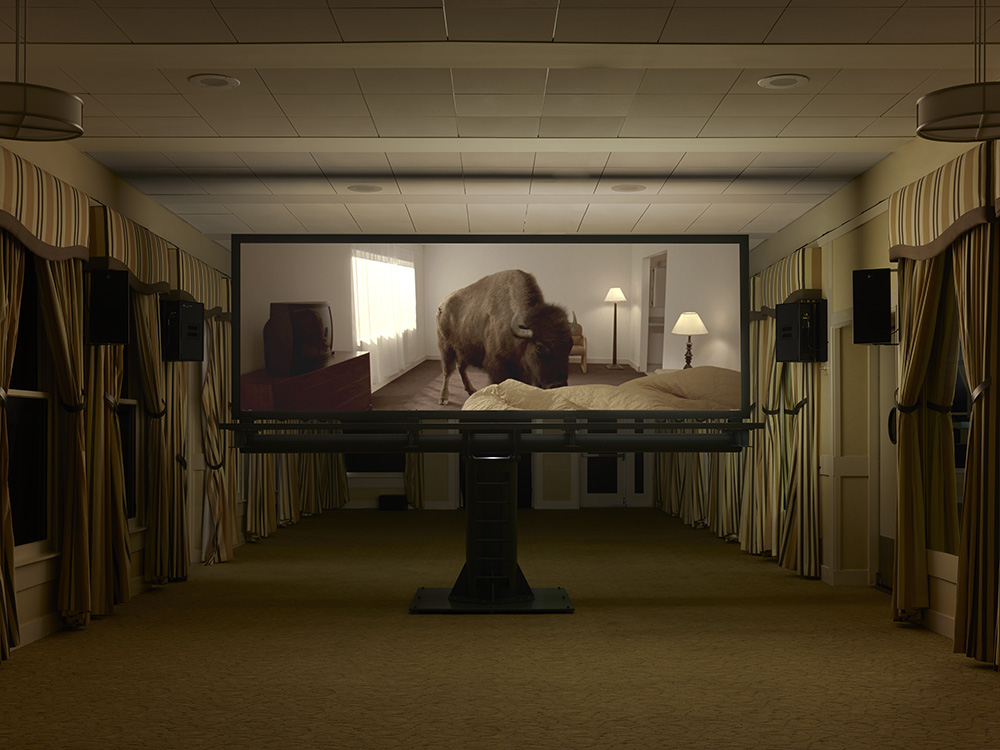
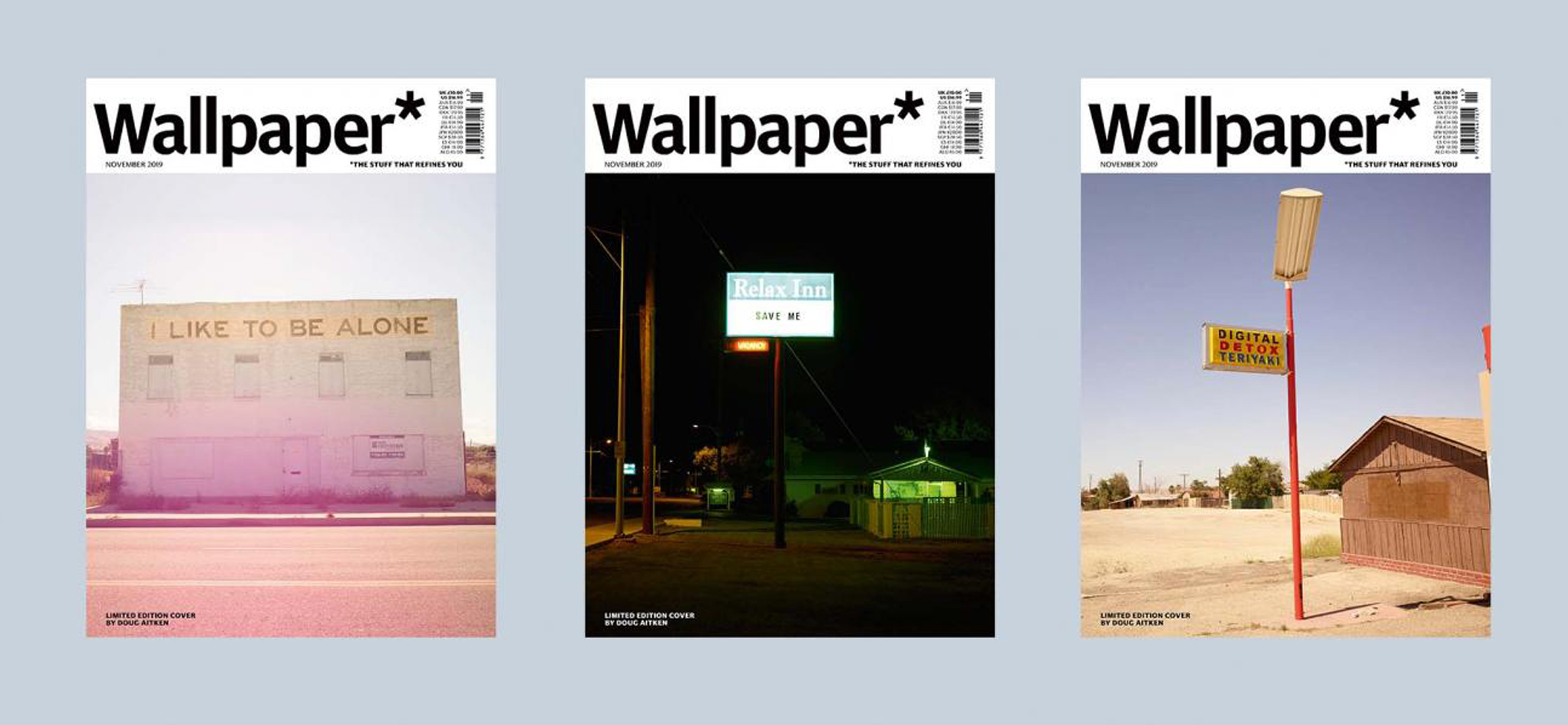
Top: Doug Aitken’s Migration (Empire), 2008, installation view from the group exhibition ’Lands End’ at San Francisco’s Cliff House, organised by For-Site (until 27 March 2022). Above: Doug Aitken’s limited-edition cover series for Wallpaper’s November 2019 issue, featuring Return to the Real, a collection of subversive images that saw time-worn signage in the American West reworked with 21st-century text
While many artists of his stature may yearn for permanence, Aitken seems to relish the ephemeral. Arguably his best-known project is Station to Station, 2013, a train and light sculpture that travelled from New York to San Francisco, stopping in major cities along the way for installations, concerts and performances, creating cultural spectacles as memorable as they were fleeting. He later created a mirrored hot air balloon (New Horizon, 2019) that doubled as a nomadic studio, travelling across Massachusetts and hosting live events and experiences wherever the winds would take it, moving on the next day without leaving a trace. ‘I’m not really interested in something that’s static or monolithic,’ he says over Zoom. ‘I like artwork that can embrace change instead of resisting it, artwork that creates an entire process and journey, as opposed to only a destination.’
This attitude certainly informed the creation of Green Lens, 2021, Aitken’s installation for Saint Laurent on the occasion of the Parisian fashion label’s first physical catwalk presentation since the Covid-19 pandemic began. Set on the Isola della Certosa, a vacant island that played host to a military munition and bomb factory until the 1960s, Green Lens took the form of a mirrored pavilion that reflected its surrounding landscape by day and becomes a kinetic light sculpture at night. Aitken is particularly pleased to have been able to bring new vegetation to the island, in collaboration with local ecologists and botanists: ‘So when we left the island, we promoted the growth of the forest and let that live on far after the artwork,’ he recalls.
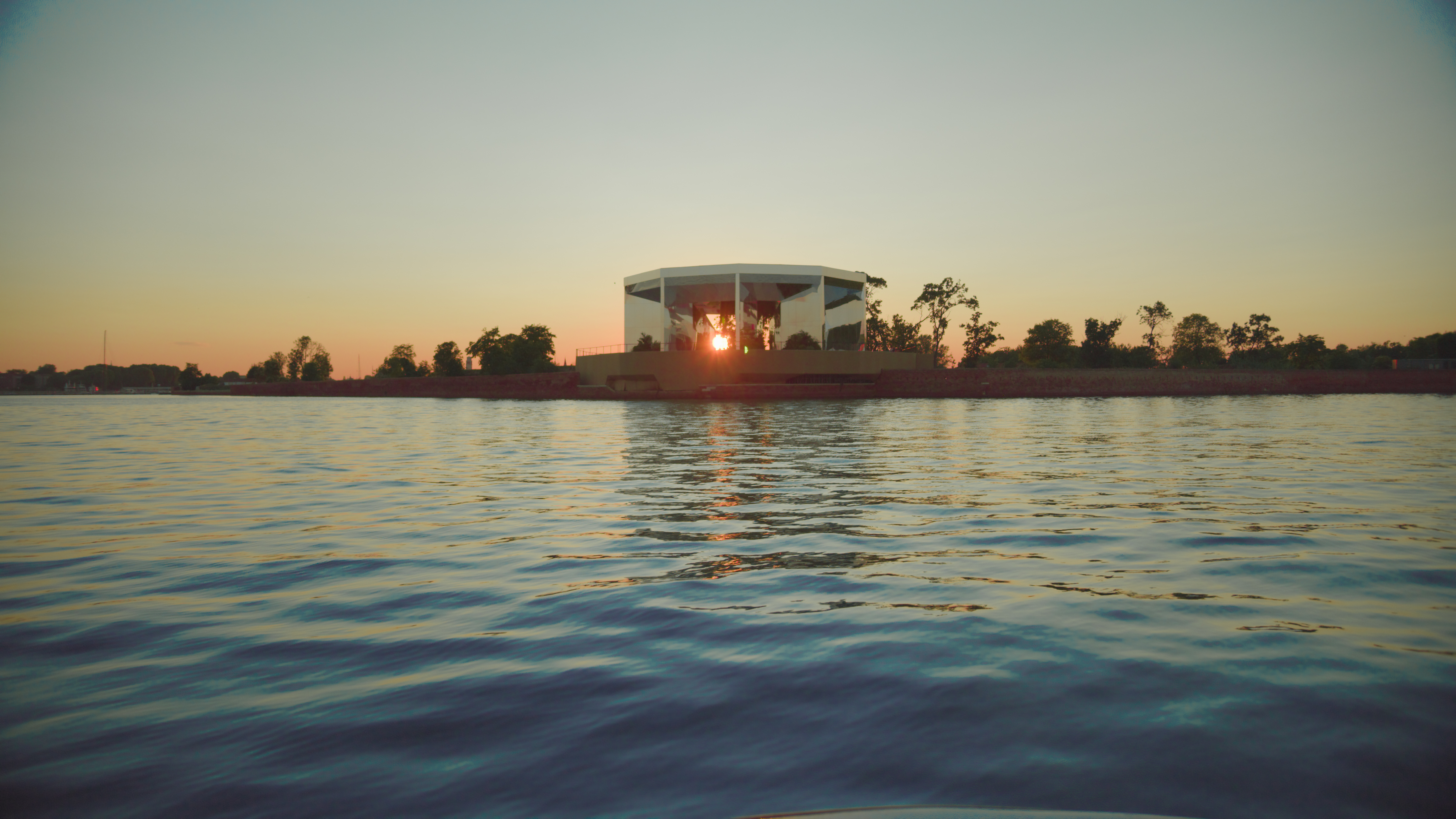

Green Lens, 2021, Aitken’s installation for Saint Laurent’s S/S 2022 show on Venice’s Isola della Certosa. © Doug Aitken, Courtesy of the artist; 303 Gallery, New York; Galerie Eva Presenhuber, Zurich; Victoria Miro, London; Regen Projects, Los Angeles
His upcoming site-specific artwork in Tasmania’s Huon Valley, called Transformer, will involve characteristically mirrored surfaces, but unlike the travelling Mirage and transitory Green Lens, this one will be there to stay. So it is permanent, in a way, but he emphasises that it will ‘live in the landscape and change in the landscape’, its kaleidoscopic interior reflecting the various colours and moods of the seasons. Repeat visitors would be rewarded with a new experience of the artwork each time they go.
RELATED STORY
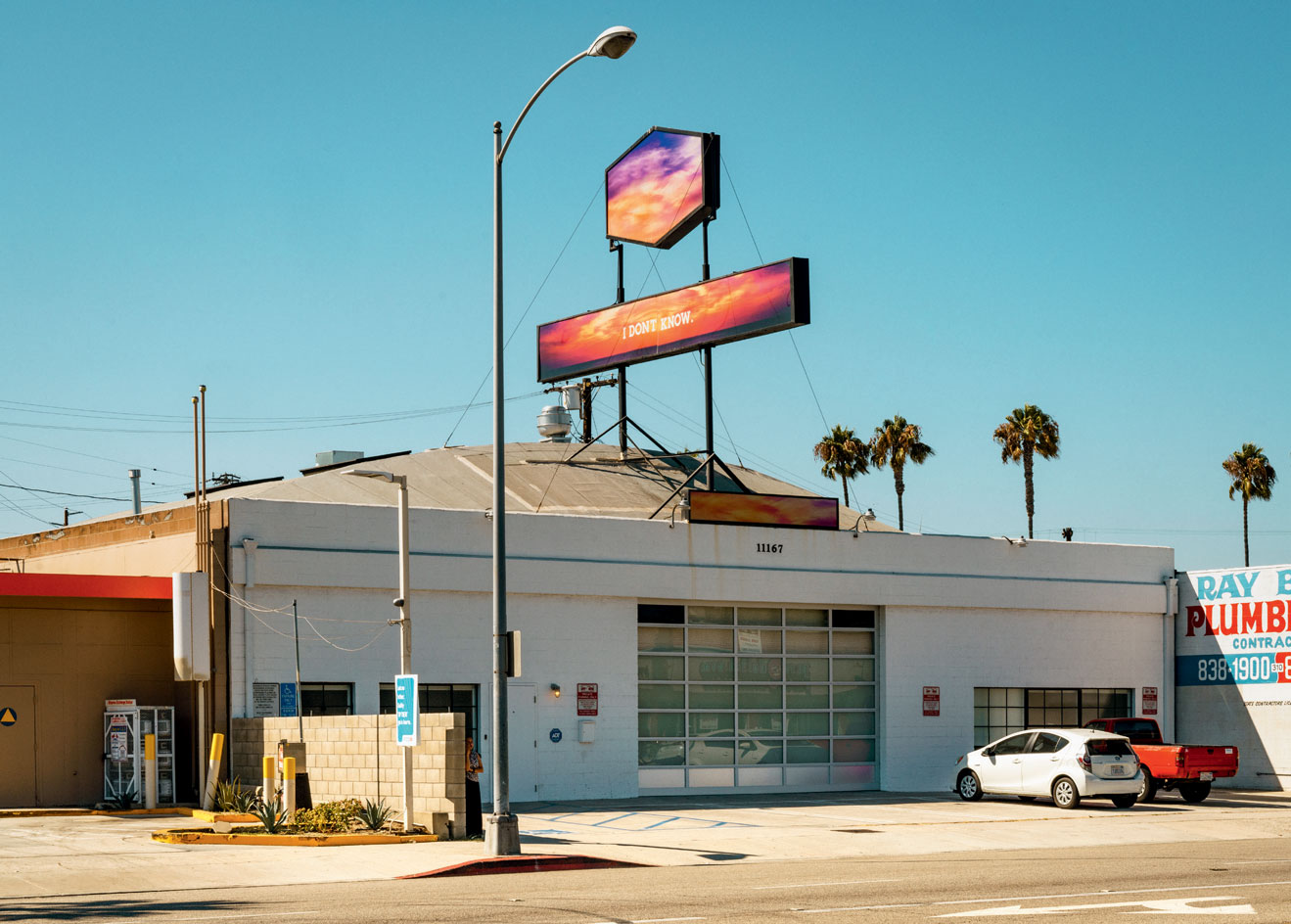
He also points out that the unusual nature of the commission: the Huon Valley had been devastated by a major forest fire, and the people of the valley had come up with the idea of commissioning an artwork as part of their rebuilding efforts. ‘It was really amazing seeing the script being reversed, a non-urban place reaching out to have an artwork created, that they feel good about and can have a sense of ownership of,’ he says. ‘It’s one of those situations I really hope to see more of, a less conventional direction to how artwork is created and how it can create bridges with cultures and groups of people.’
Judging the Wallpaper* Design Awards 2022
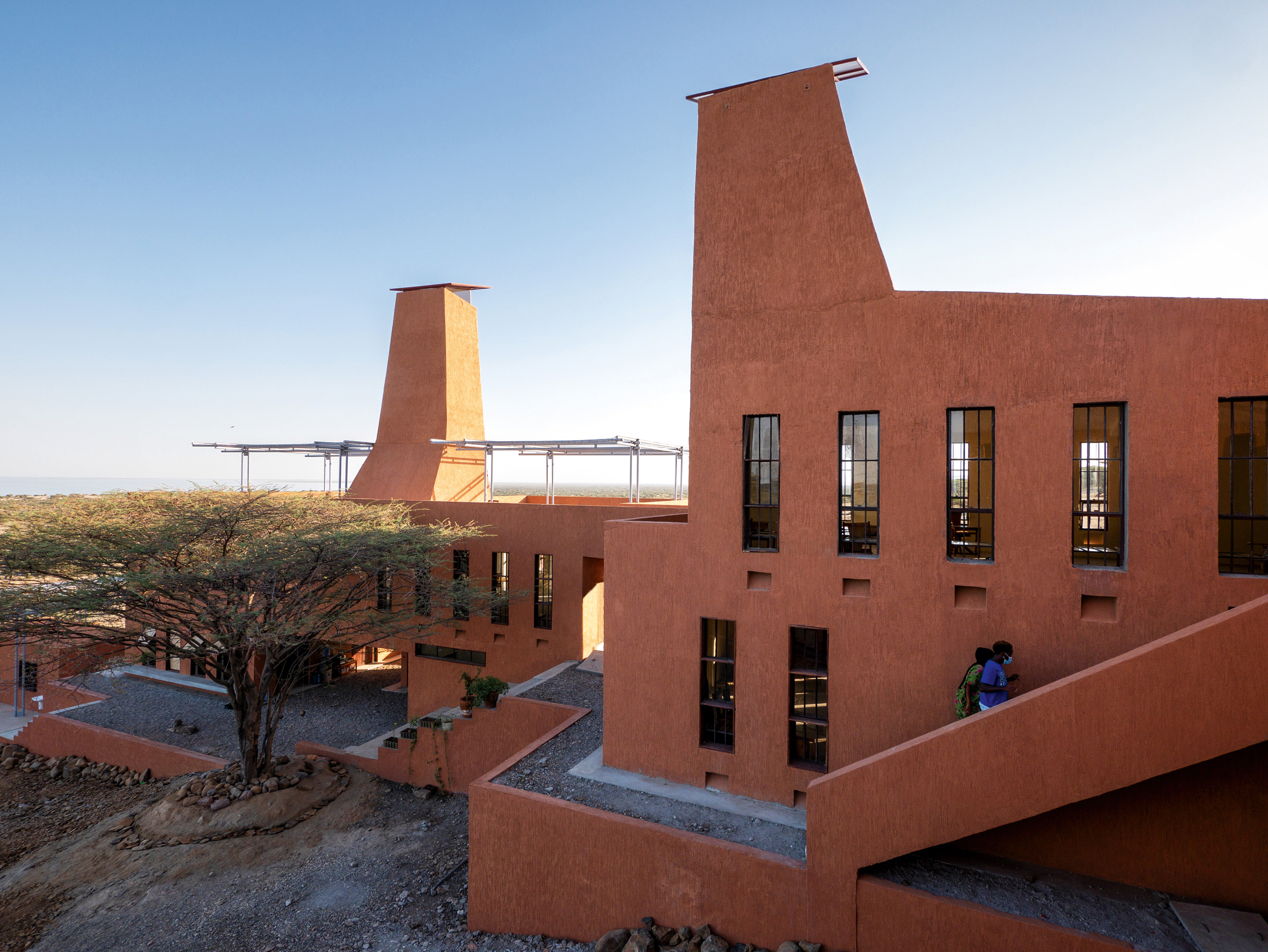
The Slak education campus in Kenya’s Turkana County, by Kéré Architecture, is Aitken’s pick for Best Public Building in the Wallpaper* Design Awards 2022.
This desire for art, and indeed architecture, that responds to geographical and cultural context explains Aitken’s affinity for Francis Kéré’s Slak education campus in Kenya, his top pick for Best Public Building (and the category winner) in the Wallpaper* Design Awards 2022. Inspired by termite mounds and the local building vernacular, the campus is built from local quarry stone, with wind towers that support natural ventilation. Aitken had met Kéré on a weeklong trip through Senegal last year (‘my first jailbreak after 14 months on the West Coast’, he recalls), and found a kindred spirit in the Burkinabè architect. ‘Francis is a great example of someone who’s progressing ways to work using a material palette that is not imported, that is regional, and then retooling it into the future,’ he enthuses.
Receive our daily digest of inspiration, escapism and design stories from around the world direct to your inbox.
Aitken tells me that Kéré’s architecture reminds him of Arcosanti, an experimental new town by the late Italian-American architect Paolo Soleri. ‘He just got this arid, inexpensive land in the Arizona desert and started a system of building from rammed earth and adobe, reconfiguring the landscape around him into these domes and habitats.’ It’s the opposite of the starchitect-designed, pristine, monumental structures that used to draw widespread acclaim. ‘The monumental architect-designers of the past, who were the superheroes when we were coming up, seem radically dated now,’ the artist adds.
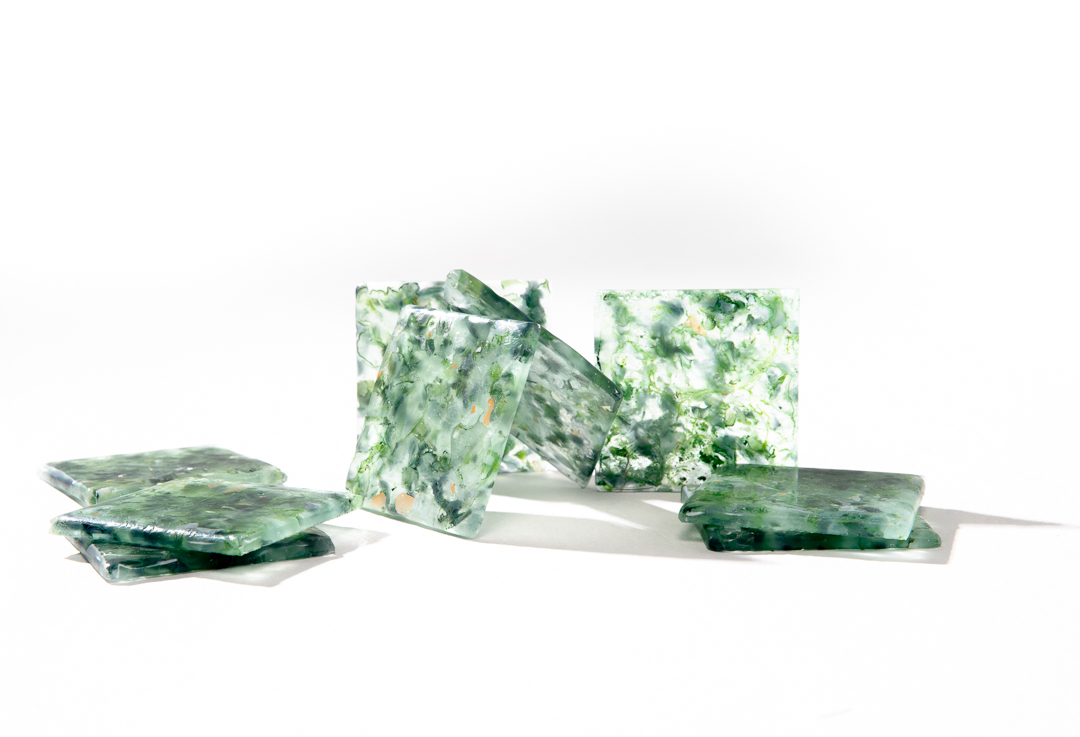
Aitken’s top pick for Best Domestic Design was the ’Forite’ tiles, by Studio Plastique, Snøhetta and Fornace Brioni, made using glass components of ovens and microwaves.
The Slak education campus, alongside Studio Plastique’s tiles (made from upcycled glass extracted from electronic waste, Aitken’s pick in our Best Domestic Design category), align with the artist’s ongoing ruminations on how art, architecture and design ‘should be about the entire narrative, rather than the endpoint’. Along these lines, Aitken is now working on two improvisational film projects on the West Coast: one follows a coastal community of drifters, the other strings together conversations with the inhabitants of a small American town surrounded by oil fields that seems unable to escape its fossil fuel-driven past.
‘These are not documentaries, more streams of consciousness that move from person to person, from language to little particles of narrative. And I wanted to create them to really humanise these questions about the future. Where are we now? Where are we going?’ We don’t yet know the answers. But what’s for sure is that these works will encourage us to look at the world anew, and connect with one another in fresh, exciting ways – as Aitken does best.
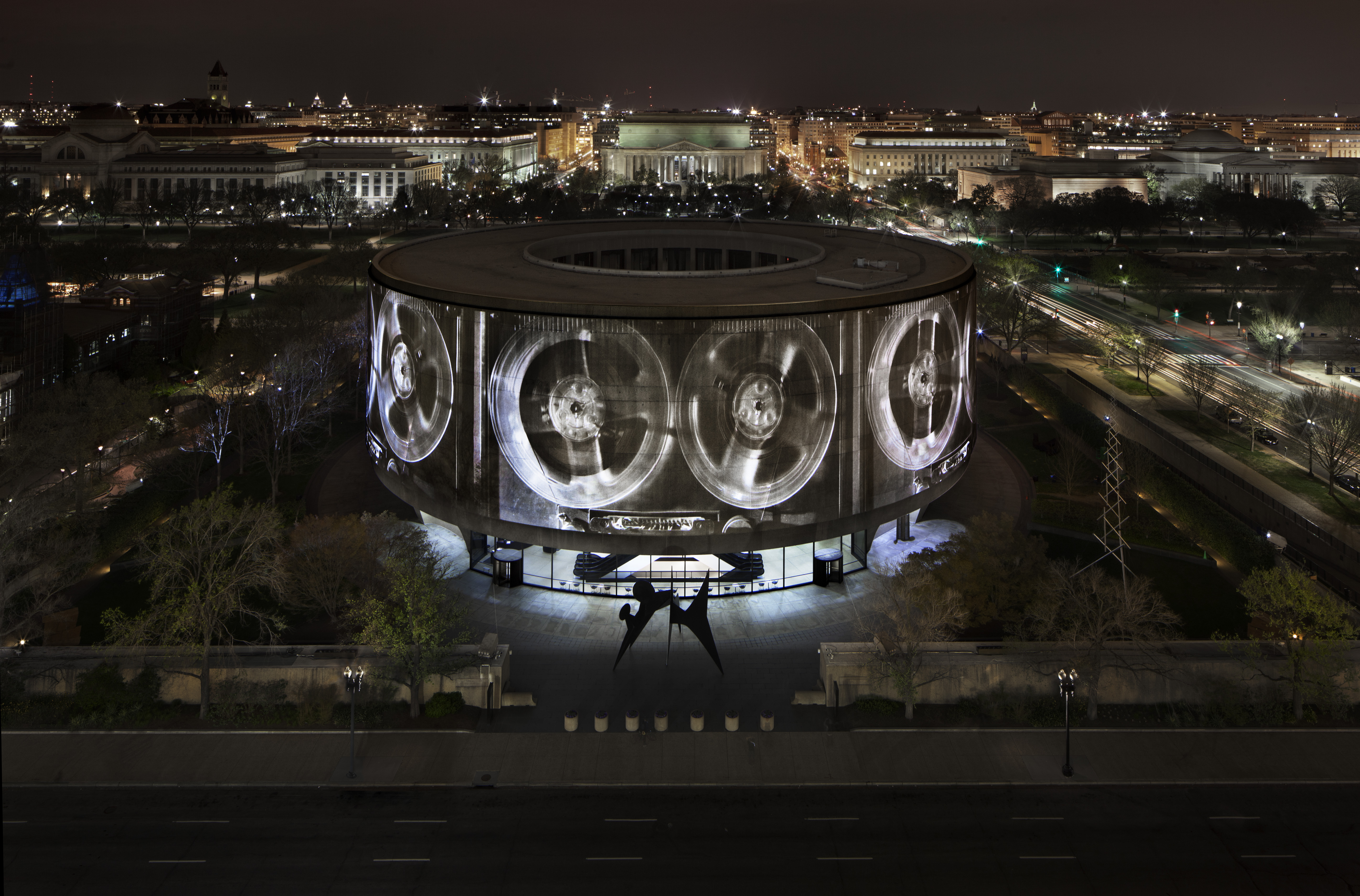
Doug Aitken, SONG 1, 2012/2015. Outdoor video installation on 360-degree facade of Hirshhorn Museum and Sculpture Garden, Smithsonian Institution, Washington, DC, a seven-channel composite video with eleven projections forming one screen.Courtesy of the artist, 303 Gallery, New York; Galerie Eva Presenhuber, Zürich; Victoria Miro Gallery, London; and Regen Projects, Los Angeles
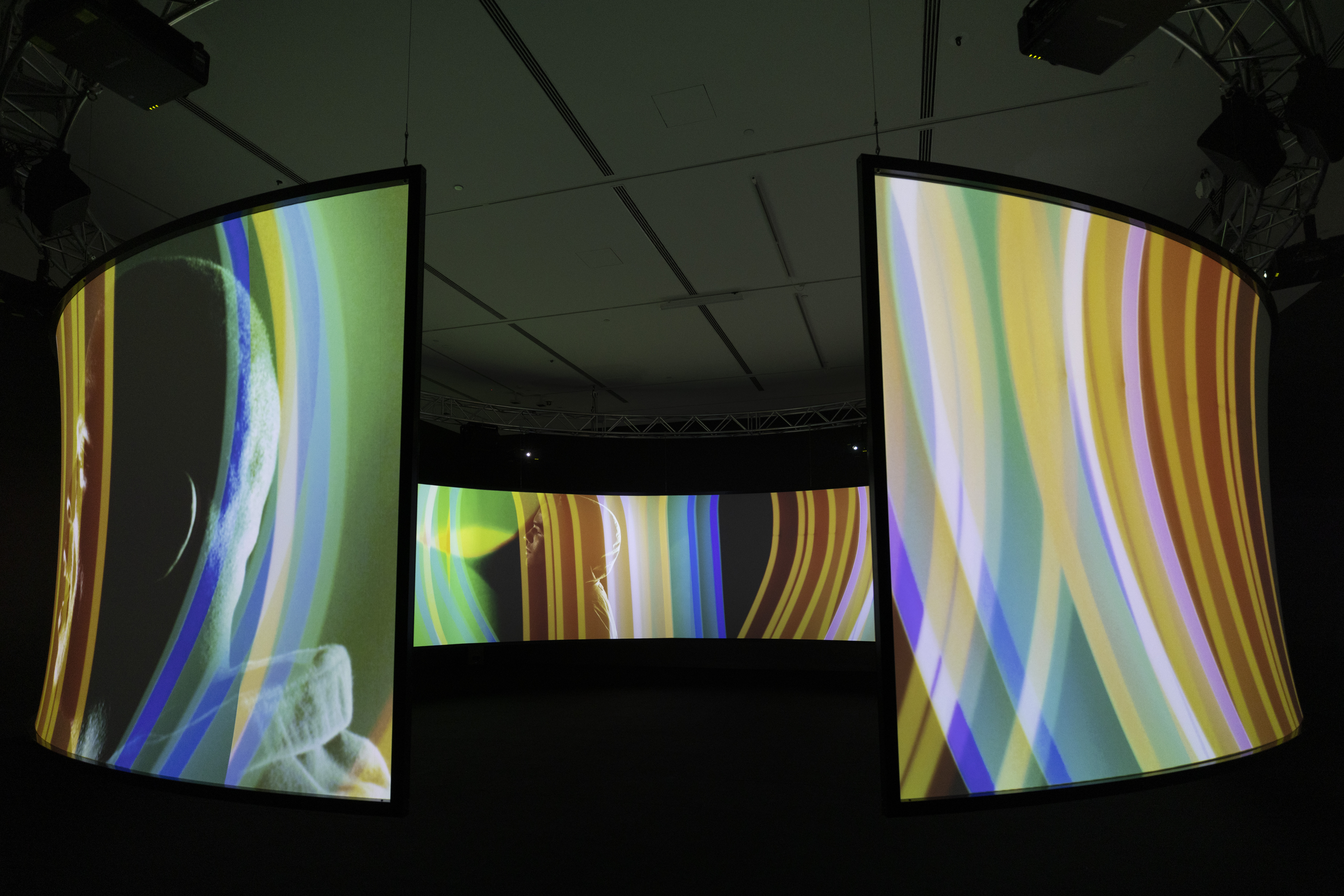
Doug Aitken, SONG 1, 2015. Video installation with seven-channel composite video, seven blended projections, 360-degree aluminum and PVC screen; Installation view at Schirn Kunsthalle, Frankfurt. Photography: Norbert Miguletz. Courtesy of the artist, 303 Gallery, New York; Galerie Eva Presenhuber, Zürich; Victoria Miro Gallery, London; and Regen Projects, Los Angeles
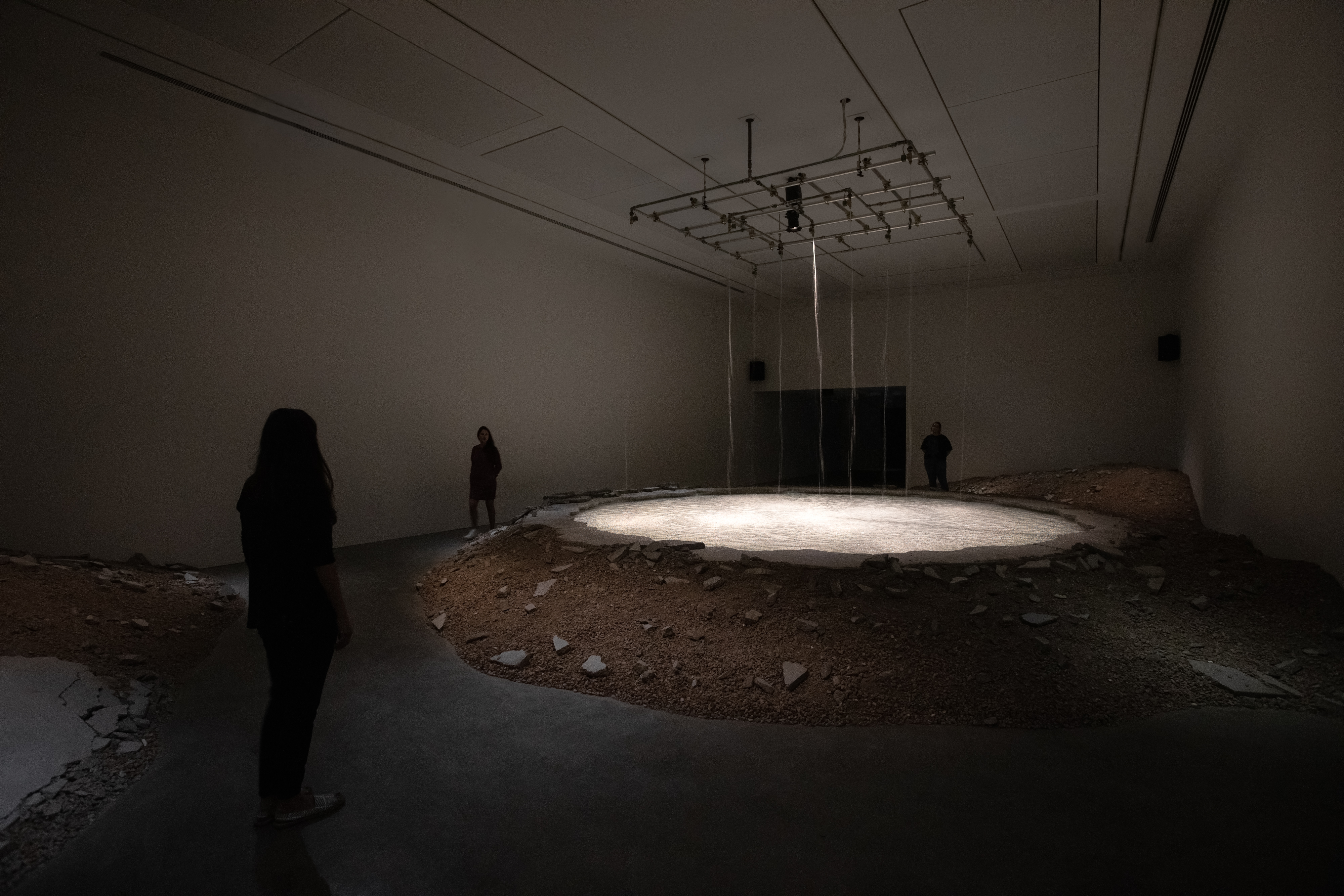
Installation view of ’Doug Aitken: New Era’, Museum of Contemporary Art Australia, Sydney, 2021, featuring Sonic Fountain II, 2013/15. © Doug Aitken, courtesy of the artist; Museum of Contemporary Art Australia, Sydney; 303 Gallery, New York; Galerie Eva Presenhuber, Zurich; Victoria Miro Gallery, London; and Regen Projects, Los Angeles
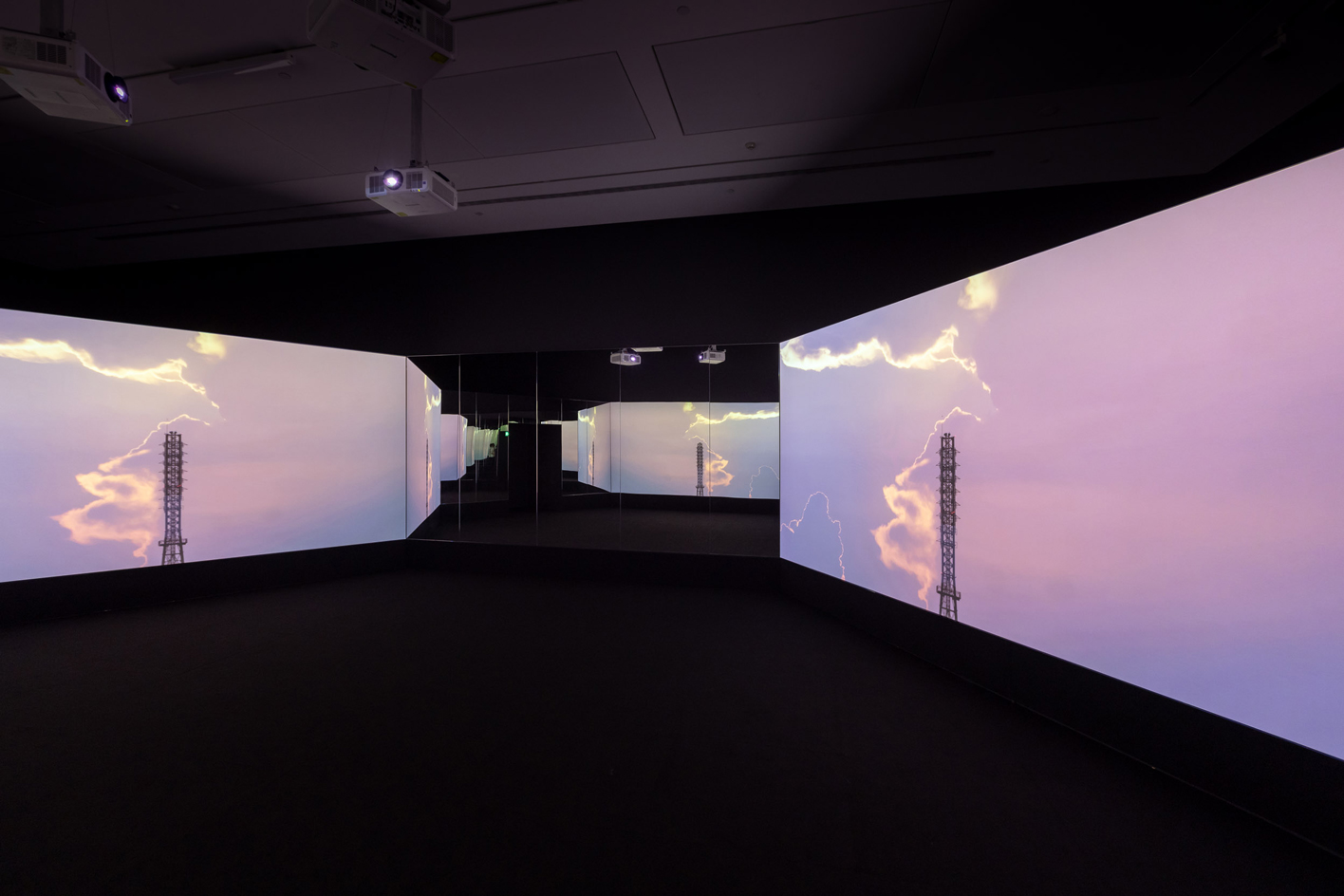
Doug Aitken, NEW ERA, 2018, installation view, Museum of Contemporary Art Australia, Sydney, 2021. Courtesy the artist; Museum of Contemporary Art Australia, Sydney; 303 Gallery, New York; Galerie Eva Presenhuber, Zurich; Victoria Miro Gallery, London; and Regen Projects, Los Angeles © the artist.
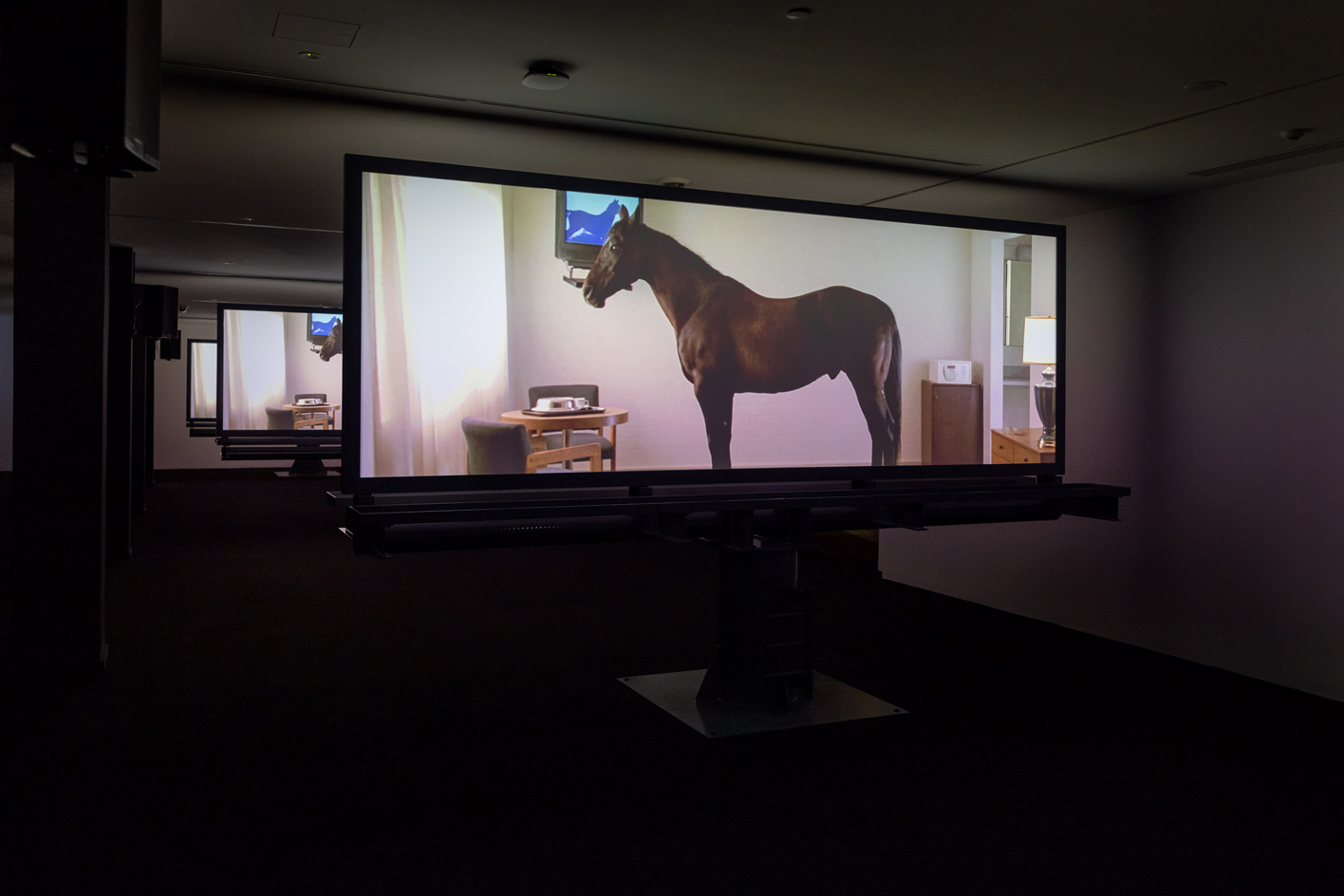
Doug Aitken, migration (empire), 2008, installation view, Museum of Contemporary Art Australia, Sydney, 2021 Courtesy the artist; Museum of Contemporary Art Australia, Sydney; 303 Gallery, New York; Galerie Eva Presenhuber, Zurich; Victoria Miro Gallery, London; and Regen Projects, Los Angeles © the artist.
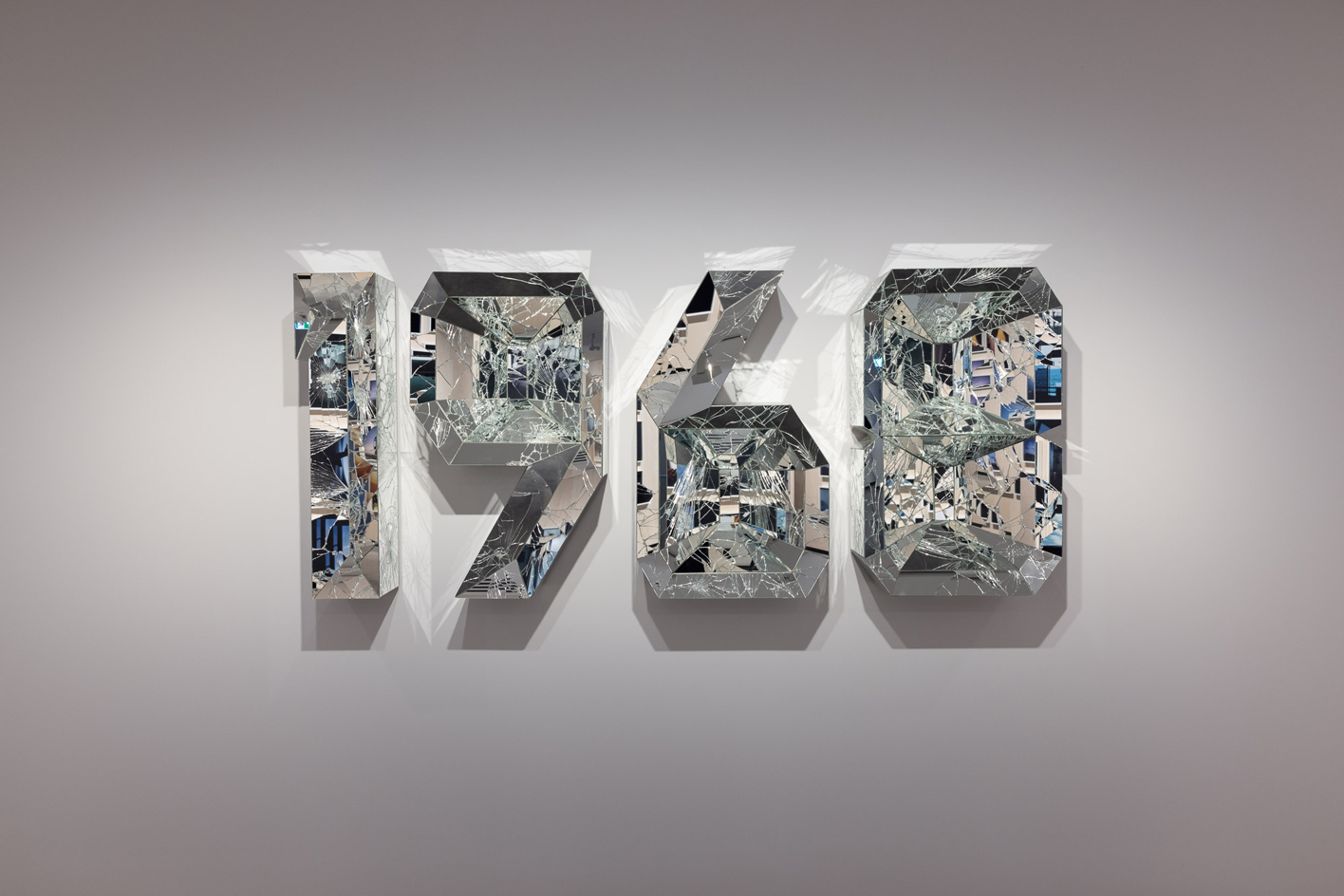
Doug Aitken, 1968 (broken), 2011, installation view, Museum of Contemporary Art Australia, Sydney, 2021
Courtesy the artist; Museum of Contemporary Art Australia, Sydney; 303 Gallery, New York; Galerie Eva Presenhuber, Zurich; Victoria Miro Gallery, London; and Regen Projects, Los Angeles © the artist.
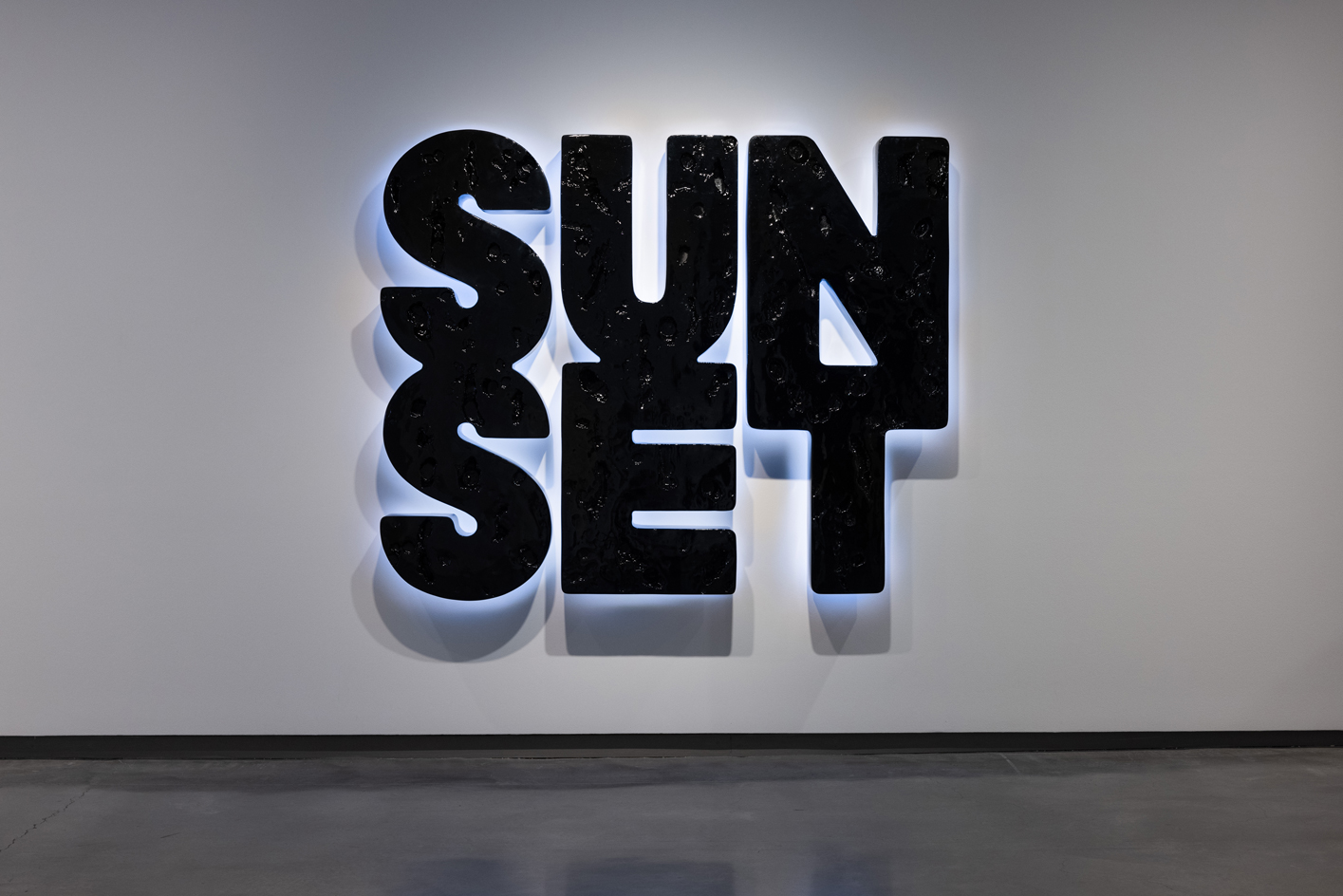
Sunset (black), 2012, installation view, Museum of Contemporary Art Australia, Sydney, 2021. Courtesy the artist; Museum of Contemporary Art Australia, Sydney; 303 Gallery, New York; Galerie Eva Presenhuber, Zurich; Victoria Miro Gallery, London; and Regen Projects, Los Angeles © the artist.
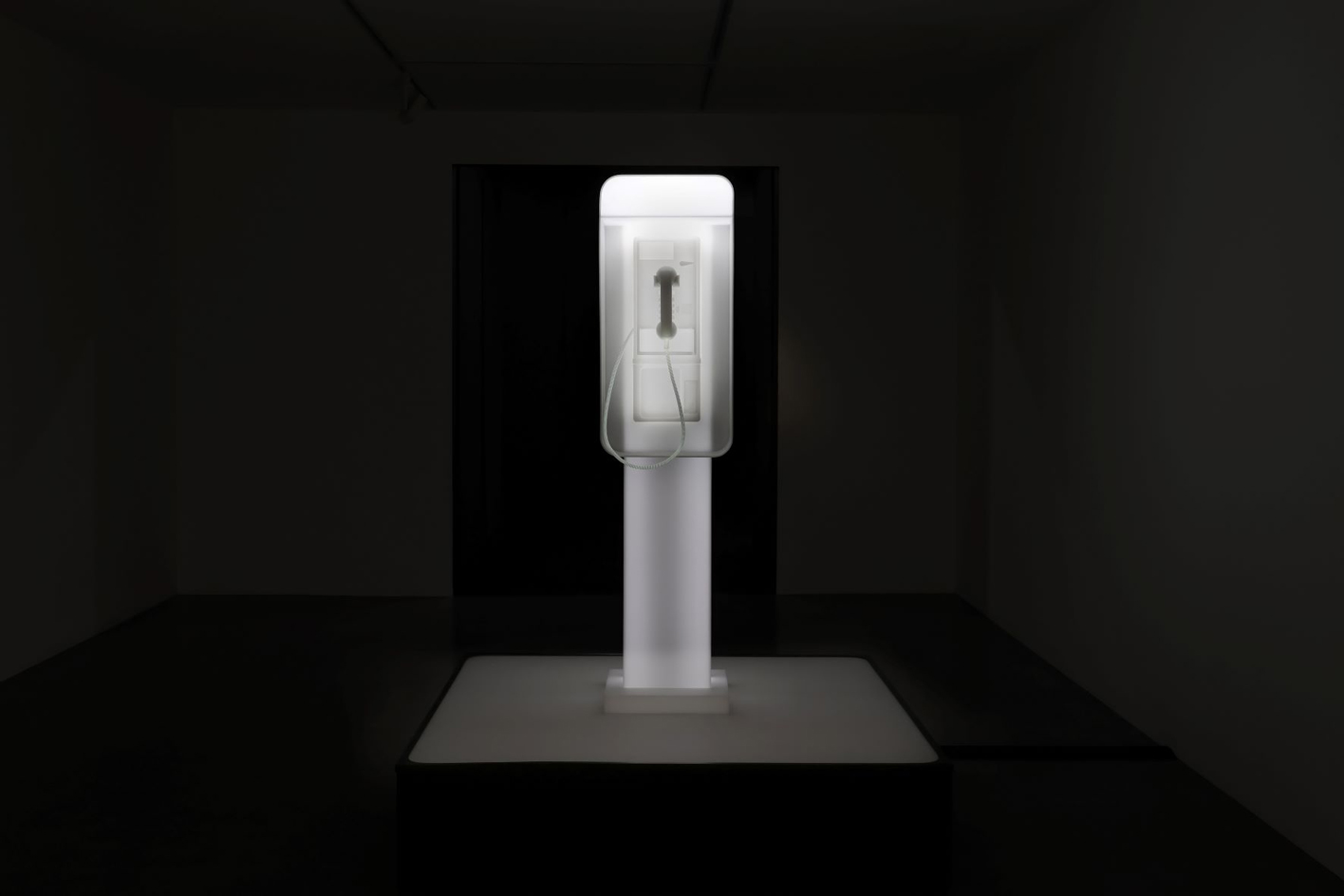
twilight, 2014, installation view, Museum of Contemporary Art Australia, Sydney, 2021. Courtesy the artist; Museum of Contemporary Art Australia, Sydney; 303 Gallery, New York; Galerie Eva Presenhuber, Zurich; Victoria Miro Gallery, London; and Regen Projects, Los Angeles © the artist
INFORMATION
‘Lands End’ is at Cliff House, San Francisco until 27 March, for-site.org
Aitken’s major solo exhibition ‘New Era’ is at MCA Sydney until 6 February 2022, mca.com.au; dougaitkenworkshop.com
The Wallpaper* Design Awards 2022 are revealed in full in the Feburary issue, on newsstands. Subscribe today!
TF Chan is a former editor of Wallpaper* (2020-23), where he was responsible for the monthly print magazine, planning, commissioning, editing and writing long-lead content across all pillars. He also played a leading role in multi-channel editorial franchises, such as Wallpaper’s annual Design Awards, Guest Editor takeovers and Next Generation series. He aims to create world-class, visually-driven content while championing diversity, international representation and social impact. TF joined Wallpaper* as an intern in January 2013, and served as its commissioning editor from 2017-20, winning a 30 under 30 New Talent Award from the Professional Publishers’ Association. Born and raised in Hong Kong, he holds an undergraduate degree in history from Princeton University.
-
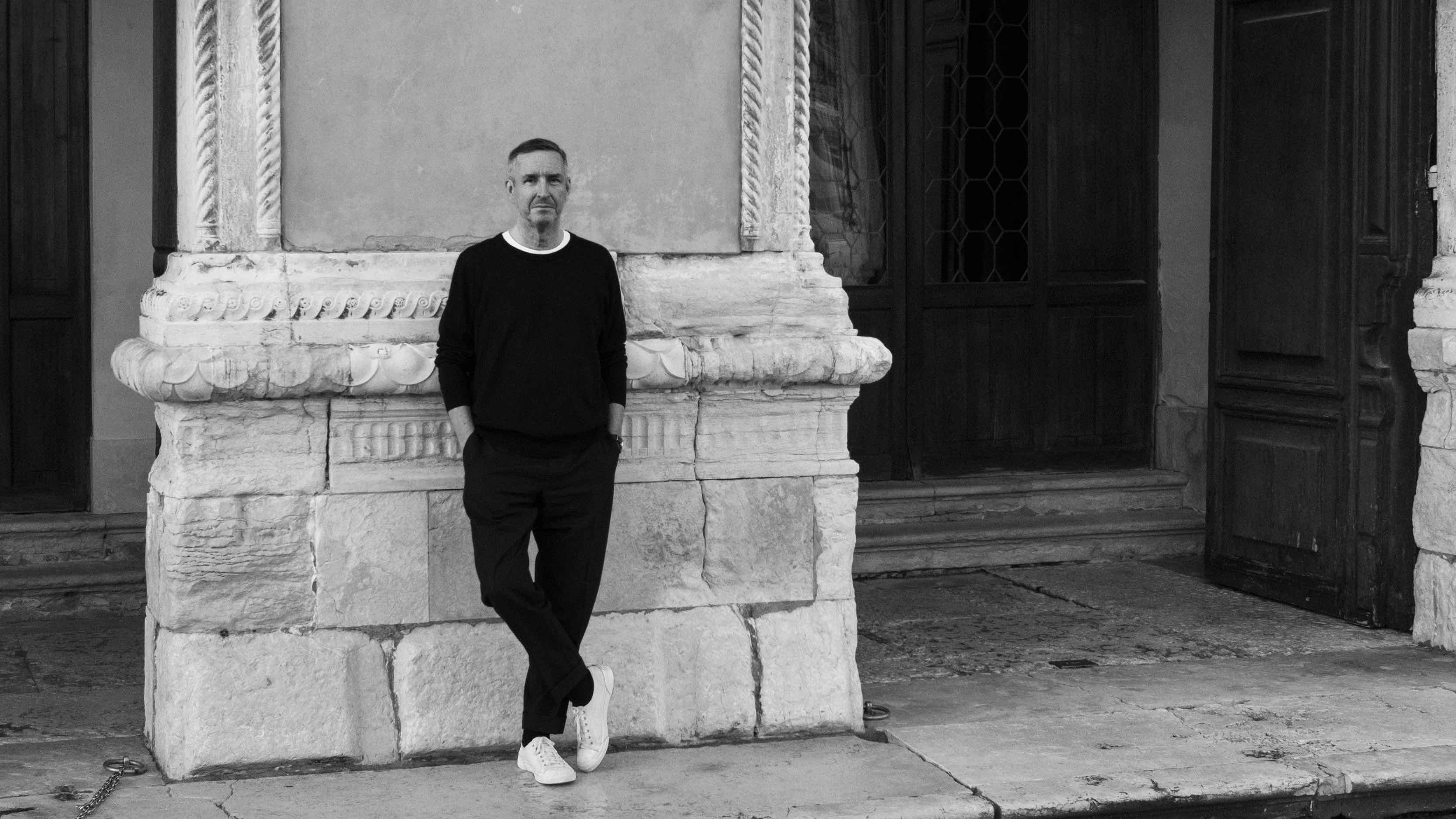 Dries van Noten on why he's building a new home for craft in Venice
Dries van Noten on why he's building a new home for craft in VeniceA year after departing the runway, Dries van Noten unveils his next chapter: the Fondazione Dries Van Noten, a newly announced cultural initiative in Venice celebrating craft in all its forms. Wallpaper meets the designer to find out why he’s not ready to retire.
-
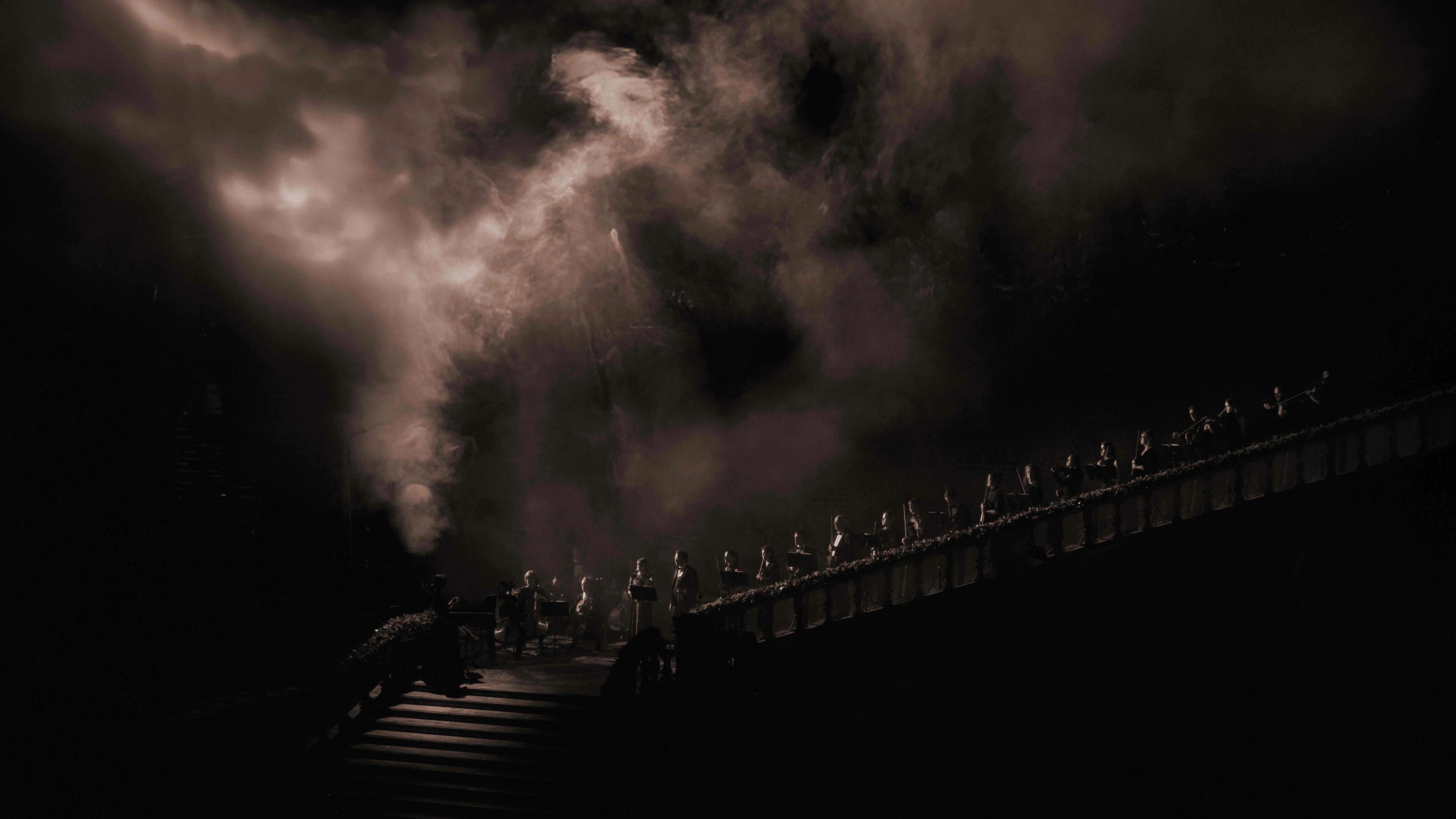 Alexander Wessely turns the Nobel Prize ceremony into a live artwork
Alexander Wessely turns the Nobel Prize ceremony into a live artworkFor the first time, the Nobel Prize banquet has been reimagined as a live artwork. Swedish-Greek artist and scenographer Alexander Wessely speaks to Wallpaper* about creating a three-act meditation on light inside Stockholm City Hall
-
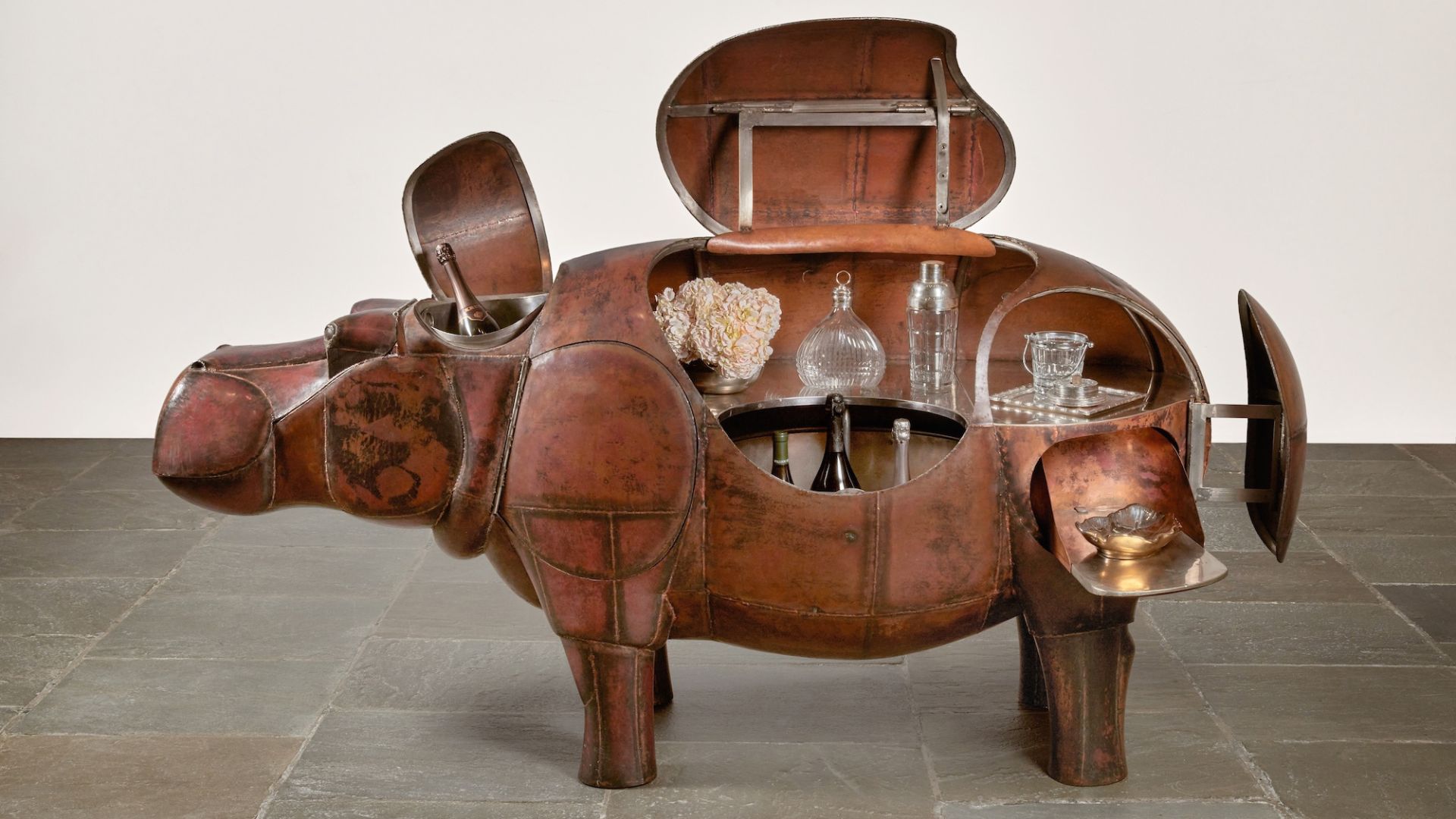 At $31.4 million, this Lalanne hippo just smashed another world auction record at Sotheby’s
At $31.4 million, this Lalanne hippo just smashed another world auction record at Sotheby’sThe jaw-dropping price marked the highest-ever for a work by François-Xavier Lalanne – and for a work of design generally
-
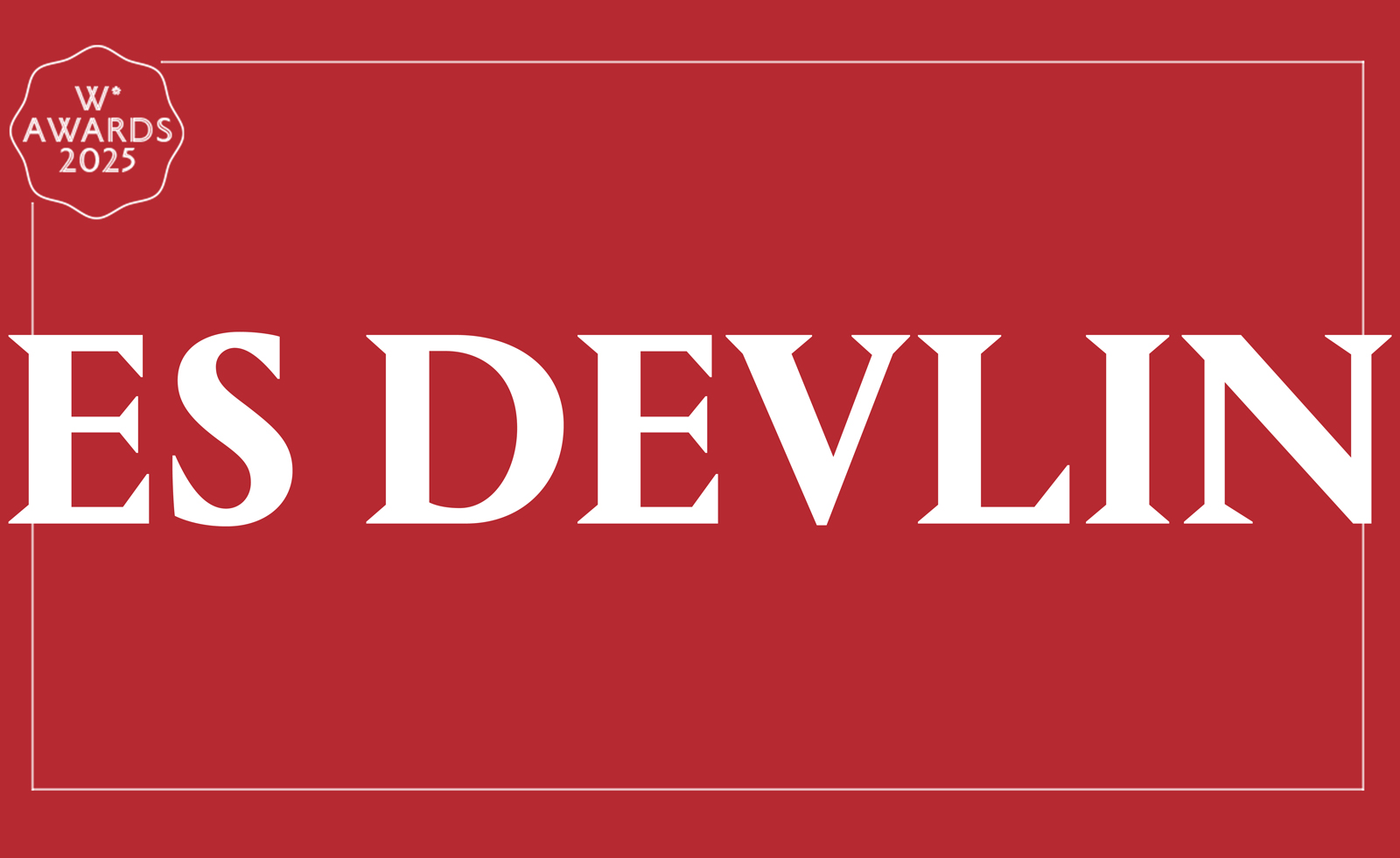 Wallpaper* Design Awards 2025: Es Devlin reflects on the past and imagines the future
Wallpaper* Design Awards 2025: Es Devlin reflects on the past and imagines the futureBritish artist and stage designer Es Devlin works across mediums, celebrating public participation in exhibitions, large-scale performances and immersive installations that frequently combine music, language and light. Interviewed by Hannah Silver
-
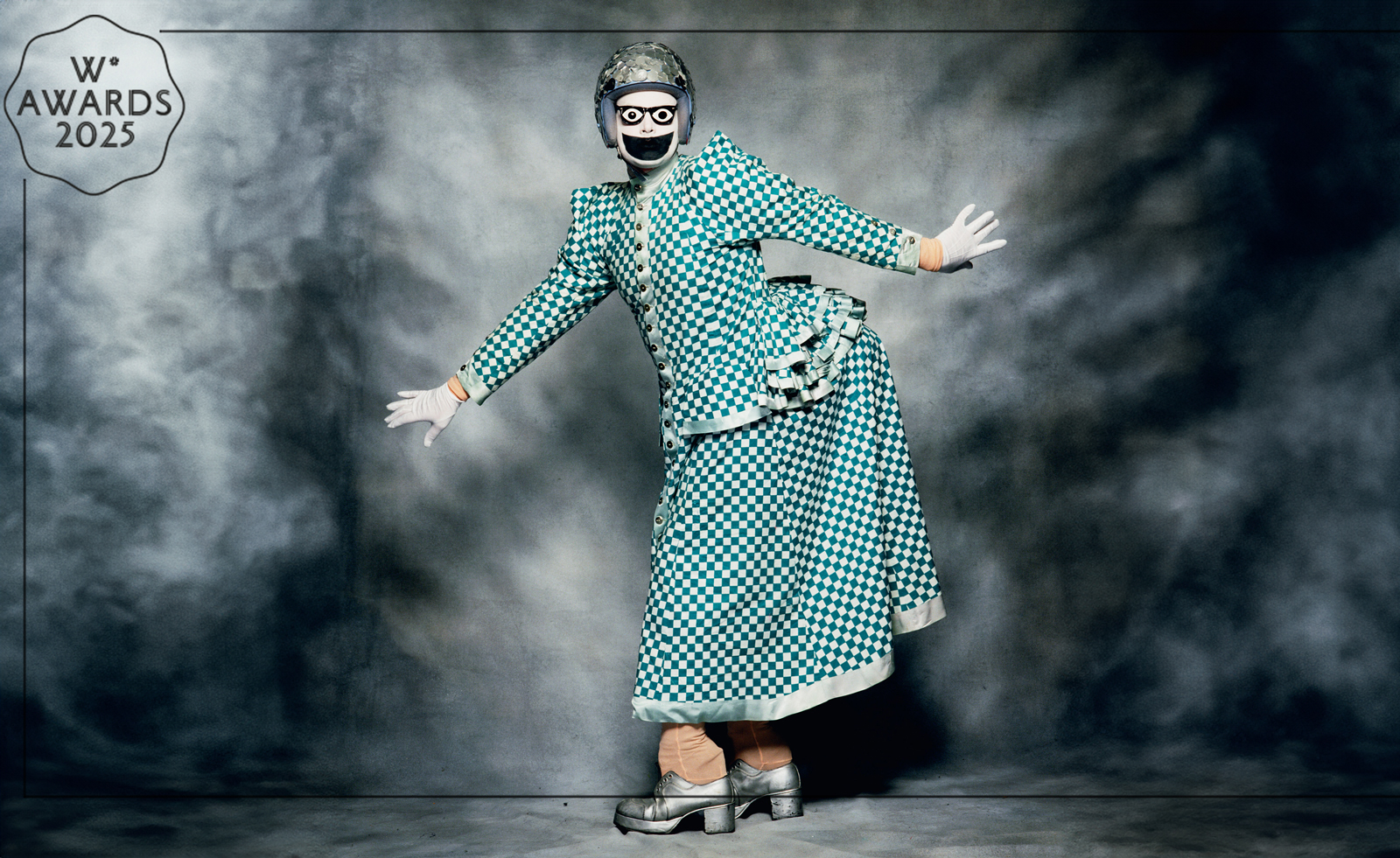 Wallpaper* Design Awards 2025: Tate Modern’s cultural shapeshifting takes the art prize
Wallpaper* Design Awards 2025: Tate Modern’s cultural shapeshifting takes the art prizeWe sing the praises of Tate Modern for celebrating the artists that are drawn to other worlds – watch our video, where Wallpaper’s Hannah Silver gives the backstory
-
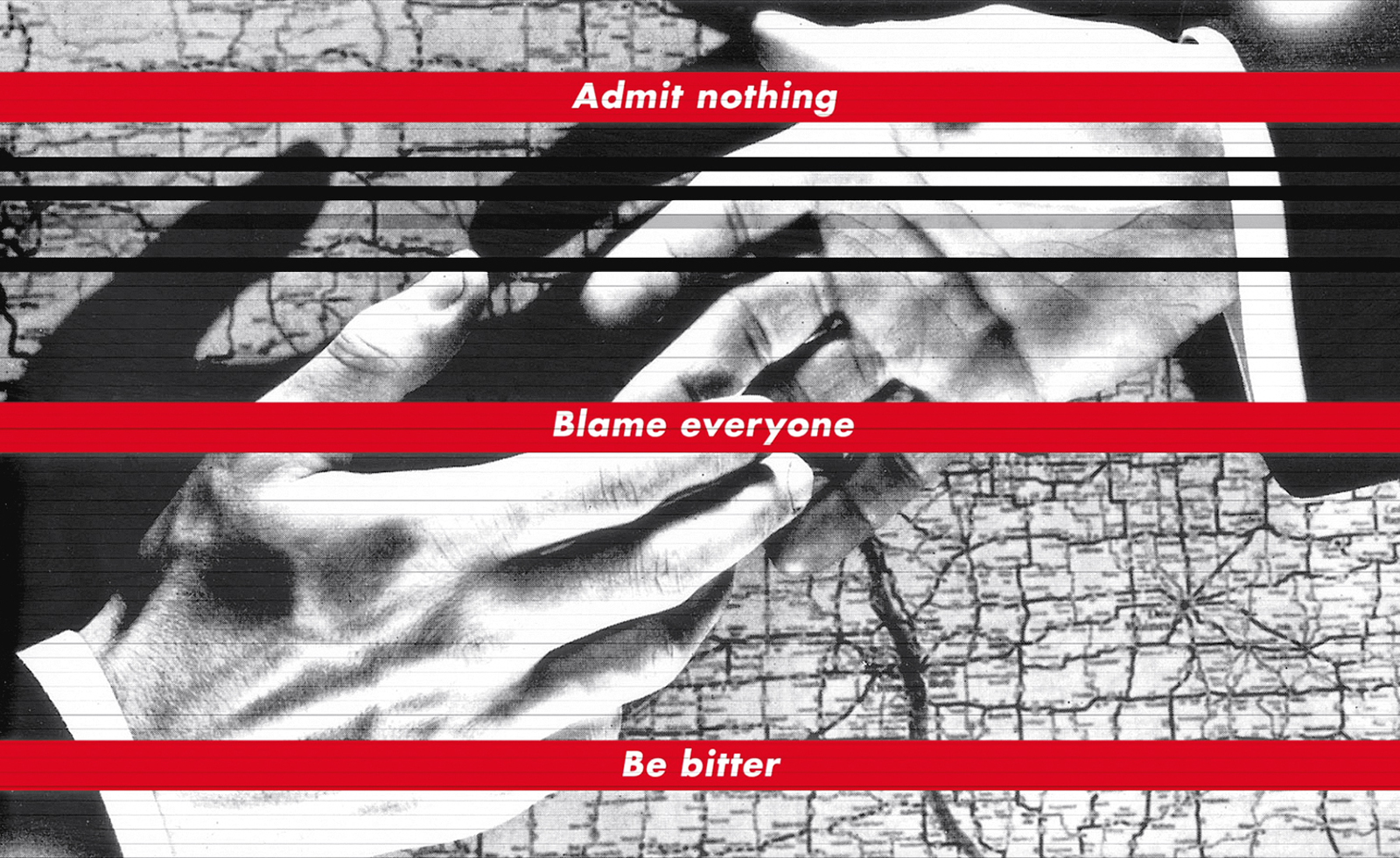 Barbara Kruger wins Best Thought-Provoker in Wallpaper* Design Awards 2024
Barbara Kruger wins Best Thought-Provoker in Wallpaper* Design Awards 2024‘Thinking of You. I Mean Me. I Mean You’ by Barbara Kruger at Serpentine Gallery, opening 1 February 2024, is a Wallpaper* winner
-
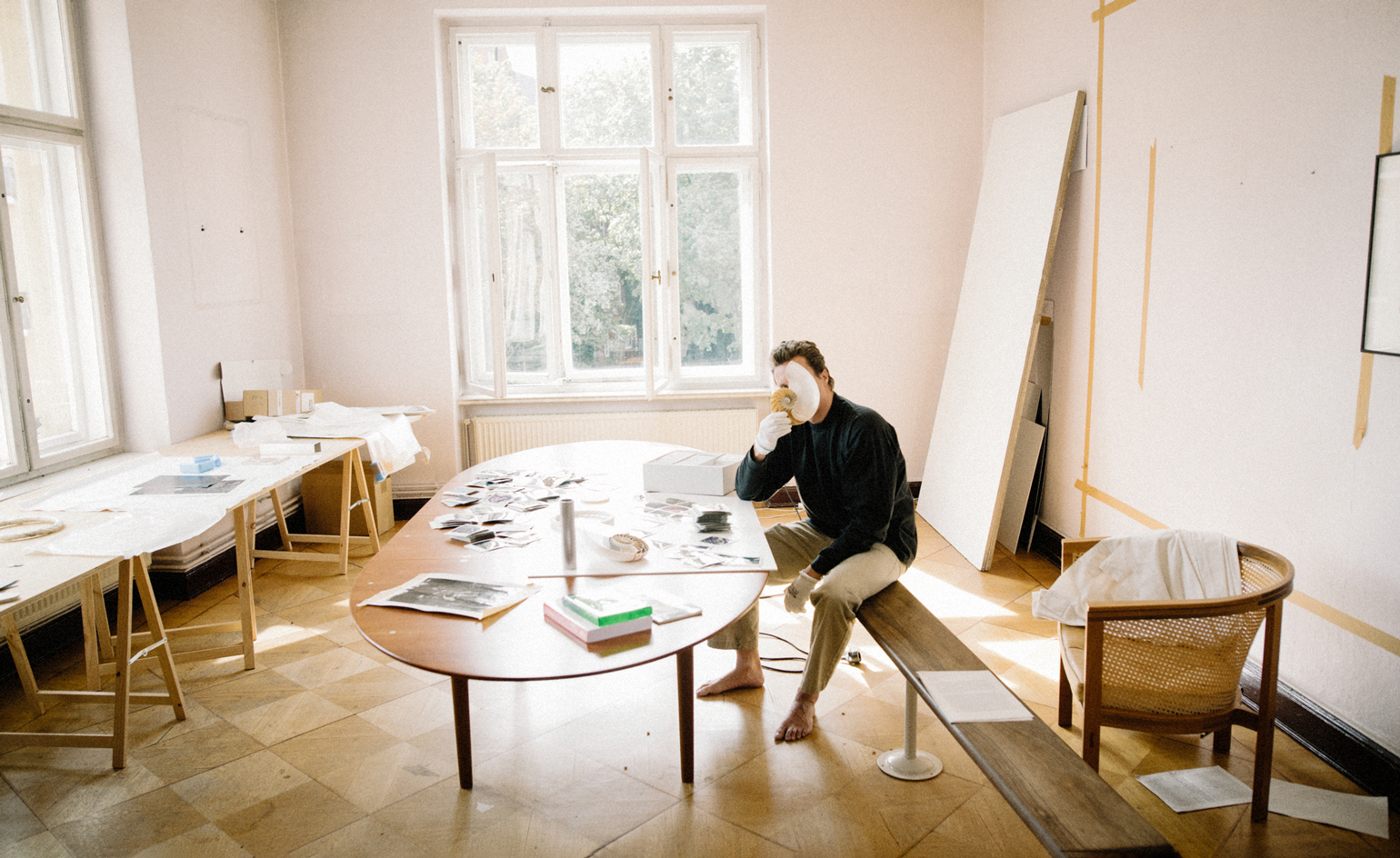 Cyprien Gaillard on chaos, reorder and excavating a Paris in flux
Cyprien Gaillard on chaos, reorder and excavating a Paris in fluxWe interviewed French artist Cyprien Gaillard ahead of his major two-part show, ‘Humpty \ Dumpty’ at Palais de Tokyo and Lafayette Anticipations (until 8 January 2023). Through abandoned clocks, love locks and asbestos, he dissects the human obsession with structural restoration
-
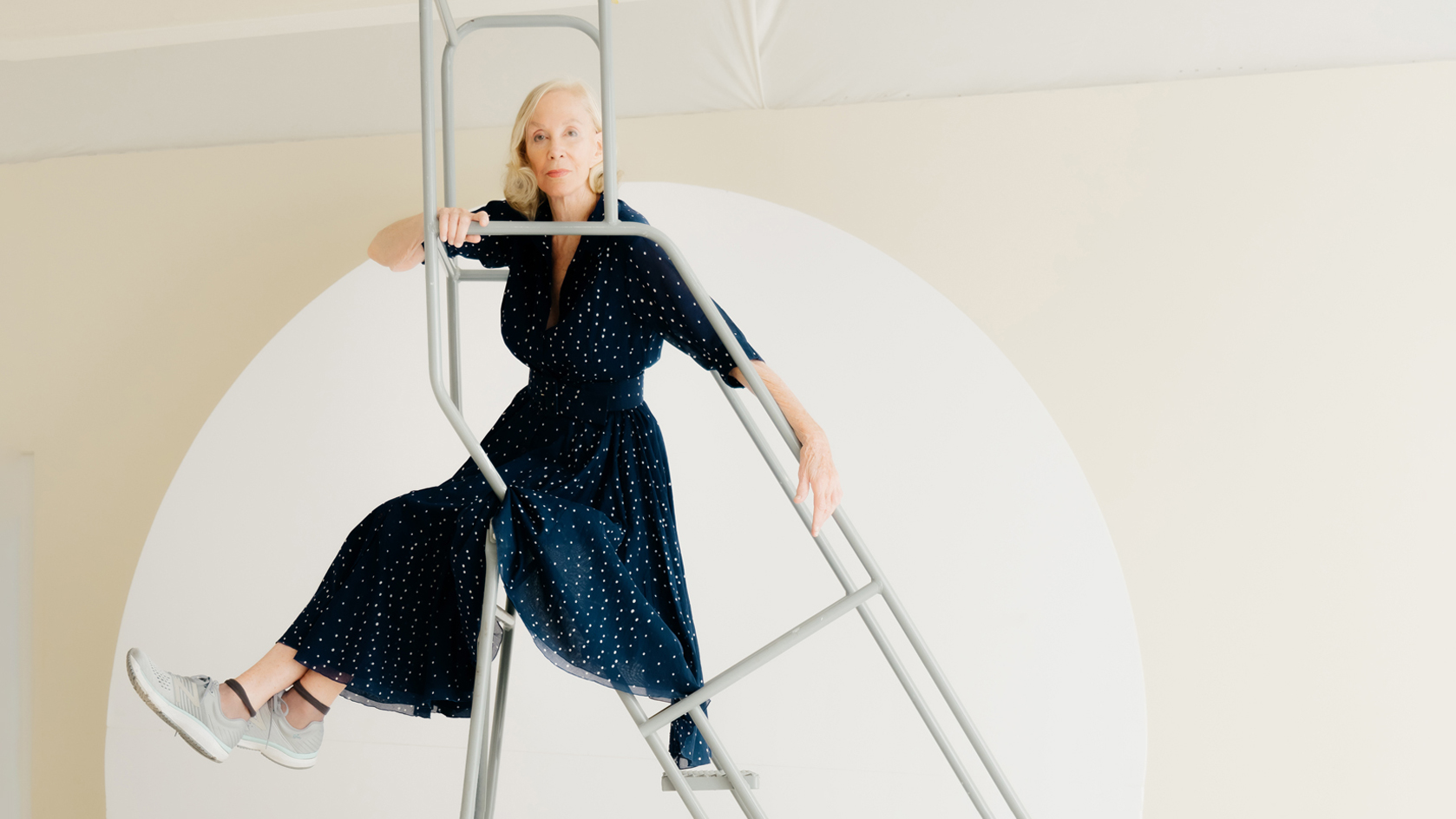 Year in review: top 10 art interviews of 2022, chosen by Wallpaper* arts editor Harriet Lloyd-Smith
Year in review: top 10 art interviews of 2022, chosen by Wallpaper* arts editor Harriet Lloyd-SmithTop 10 art interviews of 2022, as selected by Wallpaper* arts editor Harriet Lloyd-Smith, summing up another dramatic year in the art world
-
 Yayoi Kusama on love, hope and the power of art
Yayoi Kusama on love, hope and the power of artThere’s still time to see Yayoi Kusama’s major retrospective at M+, Hong Kong (until 14 May). In our interview, the legendary Japanese artist vows to continue to ‘create art to leave the message of “love forever”’
-
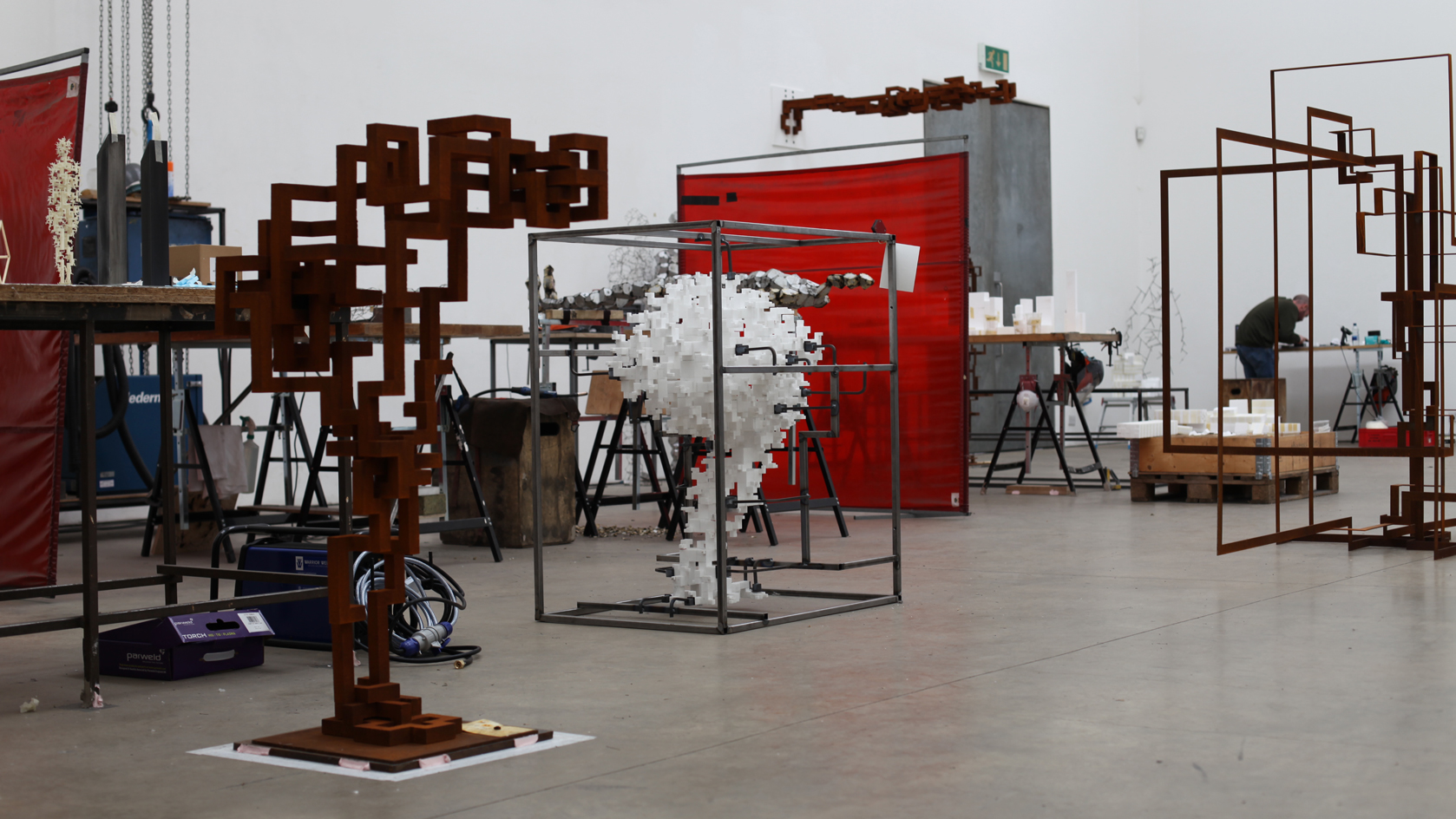 Antony Gormley interview: ‘We’re at more than a tipping point. We’re in a moment of utter crisis’
Antony Gormley interview: ‘We’re at more than a tipping point. We’re in a moment of utter crisis’We visit the London studio of British sculptor Antony Gormley ahead of his major new show ‘Body Field’ at Xavier Hufkens Brussels
-
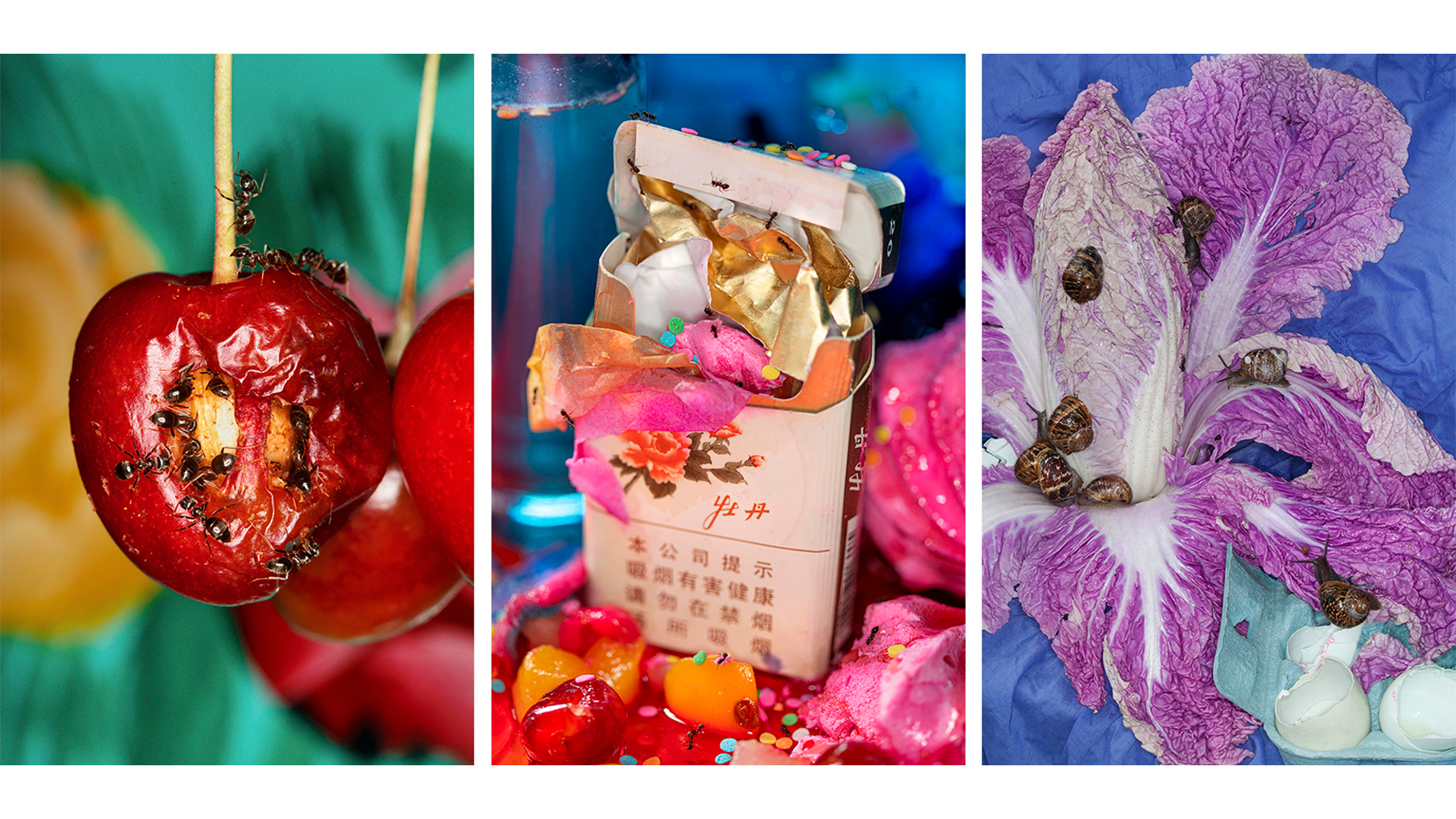 Photographer Maisie Cousins on nostalgia, impulsive making and ‘collecting useless things’
Photographer Maisie Cousins on nostalgia, impulsive making and ‘collecting useless things’Explore the vision of British artist Maisie Cousins in ‘Through the lens’, our monthly series spotlighting photographers who are Wallpaper* contributors